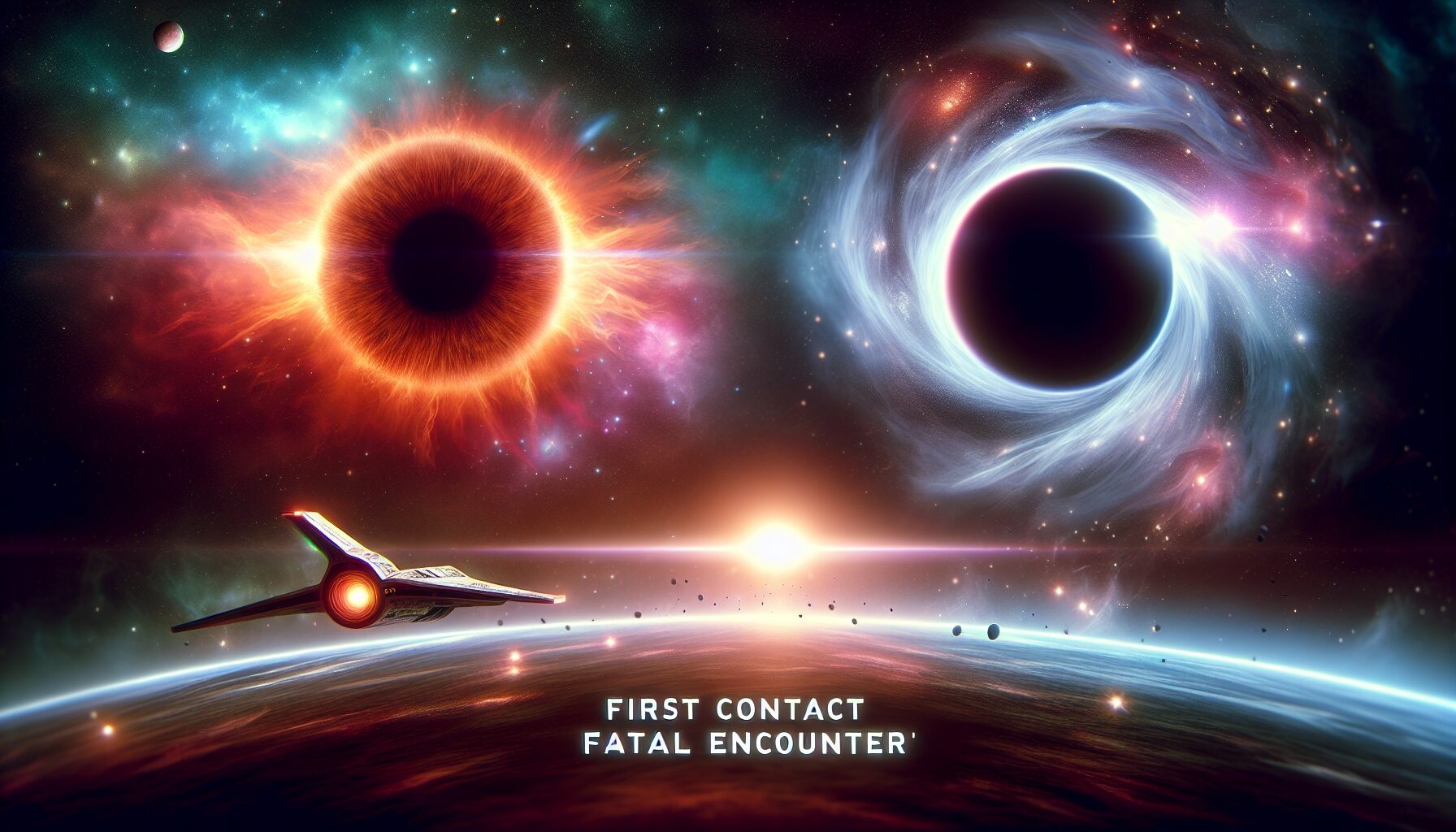Contact and Death: Why First Encounters Could Be Fatal
The idea of making first contact with extraterrestrial life has long been a subject of fascination and speculation within the realms of science fiction and scientific inquiry. Yet, as we edge closer to potentially discovering or being discovered by intelligent life forms beyond Earth, scientists and ethicists are raising concerns about the potential dangers involved. These risks are not just about communication barriers or diplomatic challenges but could be as grave as involuntary annihilation. This article explores why first encounters with alien civilizations could indeed be fatal.
The Biological Menace
One of the most concerning aspects of first contact lies in the field of microbiology. The simplest life forms on Earth have proven over millennia to be remarkably adaptable and often deadly. Humans have faced catastrophic consequences simply by traveling across different continents, let alone planets.
“The history of exploration is replete with examples of populations being decimated by novel pathogens, from smallpox in the Americas to the bubonic plague in Europe,” notes The Journal of Infectious Diseases. The introduction of an entirely new set of microorganisms from a distant world—or vice versa—could lead to pandemics exponentially more catastrophic than anything Earth has ever witnessed.
The prospect of alien viruses or bacteria to which humans have no immunity could lead to rapid and uncontrollable outbreaks. Conversely, Earth-born pathogens could prove equally lethal to alien life forms with no defenses against them.
Technological Disparity and Misunderstanding
The technological gap between humanity and a potential extraterrestrial civilization could spell disaster. If we assume that these beings have the capability to travel across galaxies, they may possess technology far beyond our comprehension and defense capabilities. Historian David Christian, in his TED Talk “The history of our world in 18 minutes,” suggests, “In history, encounters between cultures at different levels of technology have often resulted in exploitation and domination.”
Consider the example of European colonizers and indigenous populations. Technological advantages, along with misunderstandings and cultural insensitivity, led to the subjugation and often destruction of entire civilizations. The same principles could apply on an interstellar scale, where humanity could inadvertently provoke hostility from a technologically advanced species.
The Kardashev Scale and Unknown Motives
The Kardashev Scale, developed by Russian astrophysicist Nikolai Kardashev, categorizes civilizations based on their energy use and technological advancement. A Type I civilization uses energy on a planetary scale, a Type II harnesses stellar power, and a Type III civilization utilizes energy on the scale of its entire galaxy.
Humanity has not yet achieved full Type I status, so the appearance of a Type II or III civilization could render us insignificant or obsolete from their perspective. Moreover, understanding the motives of such beings could be beyond our current cognitive and philosophical frameworks. Are they curious? Resource-hungry? Surveillance-minded? These unknowns pose significant existential risks.
Lessons from Fiction and Science
Fictional depictions often provide cautionary tales about first contact. Works like The War of the Worlds by H.G. Wells and movies such as Arrival explore themes of invasion, miscommunication, and the potentially destructive nature of such encounters.
In The War of the Worlds, humans’ initial awe and curiosity quickly turn to terror as alien technology wreaks havoc across the Earth. Similarly, Arrival focuses on the complexities and potential pitfalls in communication with extraterrestrial beings. These narratives underscore the notion that scenarios involving first contact are fraught with peril.
The Necessity of Preparedness
Given the myriad risks associated with first contact, it is crucial for our species to prepare adequately. Organizations like SETI Institute focus not only on the search for extraterrestrial intelligence but also on preparing for possible contact scenarios. Dr. Jill Tarter of the SETI Institute emphasizes the need for international protocols: “We need a coordinated response strategy, akin to the protocols established for pandemic outbreaks or natural disasters, ensuring that any first contact event does not lead to chaos or unintended harm.”
In Conclusion
While the prospect of first contact with extraterrestrial life is exhilarating, it is laden with formidable risks. The dual threats of biological contamination and technological exploitation could potentially lead to existential threats. As humanity continues to progress technologically, reaching further into the cosmos, we must tread cautiously. Preparing for a multitude of scenarios and acknowledging the potential for disaster will be vital steps in ensuring that our first encounter with alien life does not also become our last.
Building understanding, crafting robust response strategies, and fostering international cooperation may ultimately determine the differences between a mutually beneficial exchange or a tragic footnote in the saga of human exploration.

